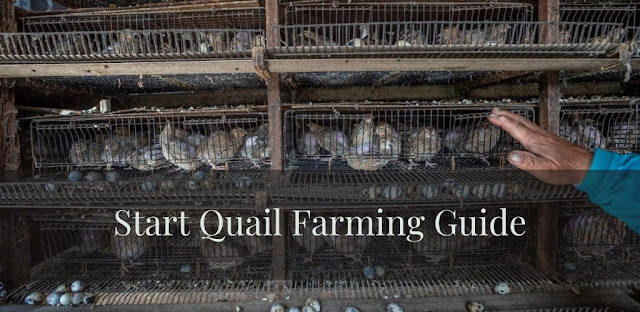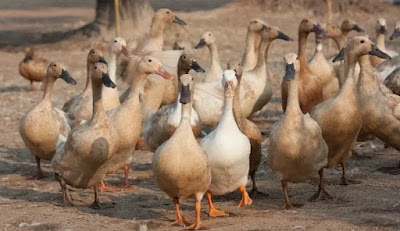Commercial Papaya Farming Management Guide
Papaya is one of the most popular tropical fruits included in the cactus plant group. Although it can tolerate dry and hot environments, it needs an adequate supply of water during its lifetime. It prefers deep loam soil that is rich in plant nutrients, well drained, good airflow and plenty of sun.
Papaya Farming Guide
Papaya grows can reach 3 to 10 meters. Usually unbranched during initial growth, When it reaches maturity usually after one year of production, new shoots appear on the rootstock which develop into branches when the plant reaches its maximum height or when the main scion is pruned.
Papaya Varieties
Generally there are two groups of papaya varieties, small fruits called solo weighing under 500 grams and large fruits weighing 500 grams to 10 kilograms. Both are used as fresh table fruit. Several large varieties are used for processing and canning.
Tree fruit that weighs less than 500 grams is called solo papaya because one fruit can be easily consumed by one person. There are several types of this size. Among them are Sunrise, Sunset, Kapoho, Hawaii, etc.
The large fruits are named after being found growing like Cavite Yellow. We have several original varieties. Morado is named according to its color. Due to natural crossbreeding, the plants do not produce the correct type.
Papaya Plant Soil & Climate Requirements
- Papaya is best grown in warm, sunny areas.
- They need sufficient humidity and even distribution of rainfall throughout the year.
- Papaya can't stand strong winds, but moderate airflow is ideal to keep it dry and prevent fungal infections from sticking on the plant. Where strong winds occur, provide windbreaks by planting tall, leafy trees on the opposite side of the wind path.
- Papaya grows best in light, well-drained soil rich in organic matter. It can tolerate any type of soil as long as it is well drained but not too dry. Their roots are sensitive to standing water which even flooding in a short period of say 3 hours can kill a plant.
- Papaya grows best at a pH of 6.0 to 6.5 but can tolerate a pH of 5.8 to 7.
- Papaya is a tropical plant, preferring a warm climate with abundant rainfall or irrigation. The temperature range or 21*C to 33*C is ideal for vigorous growth but higher temperatures can be tolerated with adequate soil moisture and relatively low humidity. This condition will produce sweeter fruit and firmer flesh.
- Rainfall 1.0 inch of rain per week, well distributed throughout the growing season, is ideal. Poor drainage and standing water can kill plants.
- Papayas grow best near sea level elevation although they can be found growing even at 2000 meters above sea level. For high-quality commercial production, papaya is best grown at altitudes below 500 meters.
Papaya Farming Management
Irrigation
The water requirement for papaya depends on the environmental factors of the area such as light, temperature, rainfall, wind, soil type, etc. Also different with the age of the plant. Young papaya plants will need more moisture than older trees. This is because older trees have slower vegetative growth. Therefore, seedlings are irrigated once or twice a week whereas fruiting trees require irrigation once every 15 days. Older trees need a lot of water.
However, they cannot tolerate standing water or standing water because their roots are shallow and not deep. It results in 'wet feet' and lower fruit yields. That's why drip irrigation in papaya plantations is a good practice.
Weeding
Frequent hand weeding is essential, and care must be taken not to damage the roots of young plants. Keep the area around the stem free of weeds. Slashing alone is not enough as the seedlings will still suffer from weed competition.
Mulch
Recommended after sowing or transplanting. Giving mulch should not be too close to the stem of the seedling, give a distance of about 10 cm from the stem. Mulch should be removed so that the development of young plants is not hampered.
Top Dressing
Apply 40kg of manure per tree before the start of the rainy season each year. It should be applied around the plant hole and inserted well into the soil.
Apply 40g CAN per tree two months after planting in the first year. If possible, apply split application of 60g CAN per tree at the start of long and short rains. After that 200g of compound fertilizer can be applied per tree per year at the start of the rainy season.
Intercropping
Papaya is intercropped with plants like tomatoes, vegetables, etc. Papaya is also grown as a filler for longan, guava, and mango. This is mainly because they stay in the field for 3-5 years. If papaya is cultivated throughout the garden, then vegetables such as garlic, radish, onion, cauliflower, kale, pilipili hoho etc. are planted for the first year. However, no crops are cultivated after the first year because competition for nutrients may occur at a later stage.
Pest and Disease Control
- Oriental fruit fly is a major pest of papaya which is of concern to exporters. They deposit their eggs in ripe fruit. Harvest fruit at the ripe green stage and dispose of properly on top of ripe & full fruit to avoid spreading pests.
- Army and Cut-worm – Larvae feed on young and mature leaves of the host plant, making large holes in the leaves. Control – Hiss, spray leaves and stems as they emerge. Repeat this procedure every two weeks. Use 1.5 tbsp. per 16 liters of water (1 knapsack load sprayer).
- Maggots (Japanese Beetle). As the larvae age, they become voracious and eat roots. Control Decis – use 4 tbsp. per 16 liters of water. Moisten the soil at the base of the stem. Apply organic fertilizer with herbal pesticide properties.
- Insect Scales – Flat scales are round, oval with various colors on the stem or fruit. Control – Spray Malathion 4 tbsp. per 16 liters of water. Spray 1 tablespoon sulfur lime per gallon of water.
- Red spider mite – Tiny 8-legged spiders are yellow, dark green or reddish on the underside of the leaves. Mites prefer to eat very young plant tissue. They can transmit viral diseases. Prevention – The most affected parts (branches and leaves) should be pruned and buried or burned. Spray with herbal insecticide or sulfur lime. When planting, make sure the seedlings are clean without pests or diseases.
- Mites and aphids suck plant sap and can transmit viral diseases. For control, remove alternative hosts, ants and allow predators and natural enemies into the plantation. Spraying herbal insecticides and lime sulfur under the leaves will greatly help rid the plant of these pests.
- Thruiops – Adults are small, elongated, winged dark brown or black – white or yellow when young. Control by spraying Malathion, Decis or Lime sulfur at weekly intervals.
- White fly - Small winged insect - Control Spray with Malathion and Lime sulfur. Herbal pesticides will also repel insect pests.
- Nematodes also cause damage to papaya roots. Planting marigolds or spreading organic fertilizer will go a long way in suppressing nematode attacks.
- Attenuation infects seedlings and mature plants. Cultivating the soil to aerate with good drainage will reduce this fungal disease. Allow sunlight to penetrate the soil surface to dry the fungus.
- Anthracnose infects fruit during ripening. They appear as circular spots on the fruit. Spraying herbal fungicides at weekly intervals before harvest is an effective control. Hot water treatment similar to mango (soaking at 45*C for 20 minutes or 52*C for 10 minutes. 58*C for 30 seconds) reduces or eliminates spoilage. Make sure the fruit dies well after hot water treatment. Control - Spray Dithane M-45 6 tbsp. per 16 liters of water, Mancozeb or Zineb use 2.5 tbsp. per 16 liters of water, a mixture of whiting 1 tbsp. per gallon of water.
- Papaya ring spot virus initially appears as oil streaks on stems and petioles and as it progresses, leaf spots become apparent. Severely infected plants do not flower or die young. For control, plants are isolated, uprooted and burned. Use tolerant varieties.
- Ants – Ants small to large, yellow, brown red or black winged or wingless. They like in the colony. Control – Regular hand weeding and planting at the base of the plant to disturb ants and nests foraging. Maintain a weed-free area at the base of each plant, which is the same diameter as the plant crown
- Mealybugs – Flat oval-shaped insects (1-4 mm long). They can transmit a viral disease known as leaf fall and will lead to decreased yields. Control by spraying Malathion at a dose of 1.5 to 3.0 tablespoons. per 16 liter knapsack sprayer or 4 tbsp. sulfur lime. Control the presence of ants that spread mealybugs and other small insects. Spray herbal pesticides.
- Aphids – These are small aphid-like insects ranging in color from yellow to pink, brown to black. They can transmit a viral disease known as rosette. Control by spraying fallen stems, leaves after emerging. Repeat this procedure every two weeks, Use 1.5 tablespoons per 16 liters of water (1 backpack spray load). Spray weekly with 1 tbsp lime sulfur. per gallon of water.
- Phytophthora – Decay of roots, fruits and stems. Seedling attenuation, root rot, stem cancer and fruit rot. Prevention by removing infected plants and fruit from the field and dispose of them properly by burying or burning.
Harvest and Post Harvest Handling
The appearance of yellow marks on green fruit is an indication of maturity and ready to harvest. Papaya fruit should be harvested when 25% or the fruit is ripe. Grasp the fruit, twist it until it breaks or cut the stem with a shape knife. Handle fruit with care to avoid unnecessary bruising and cuts.
Never drop fruit on the ground. On tall trees, use the ladder to reach and pick fruit by hand. Gently place the fruit in the basket with a soft pad. Fruit should be sent to the canning warehouse 2-4 hours from harvest. Fruit that is severely bruised, damaged, diseased, overripe, or old is rejected.
Schedule harvesting at least twice a week to minimize the incidence of overripe fruit. Treat the fruit by soaking it in hot water (45*C for 20 minutes, 52*C for 10 minutes, or 58*C for 1 minute).
Dry the fruits and wrap them in clean paper and place them in wooden or hard plastic fruit crates. Do not expose the harvested fruit to direct sunlight. Move carefully by keeping the fruit crates from moving and bumping during transit to the market.

.jpg)


Komentar
Posting Komentar